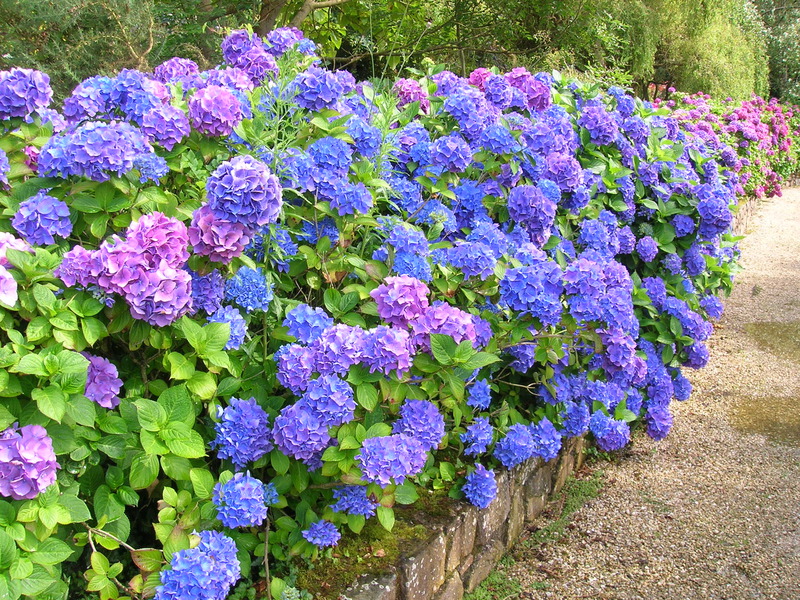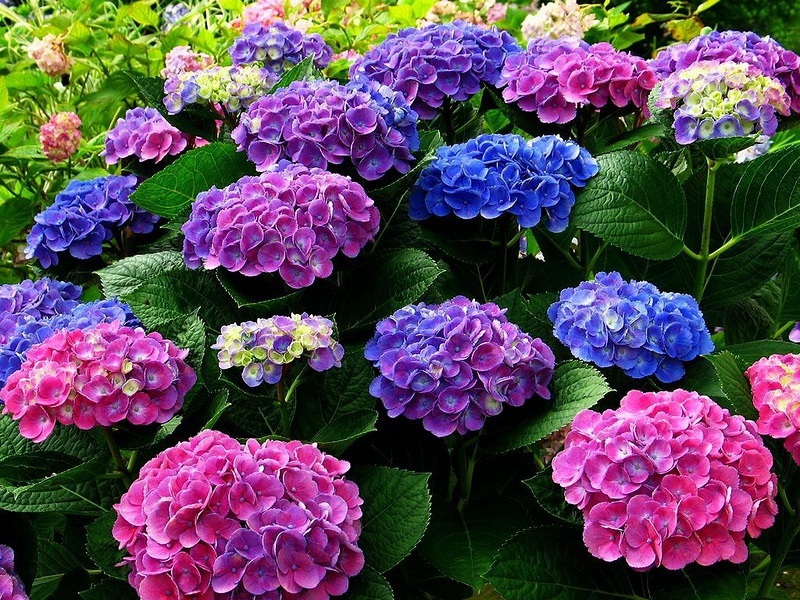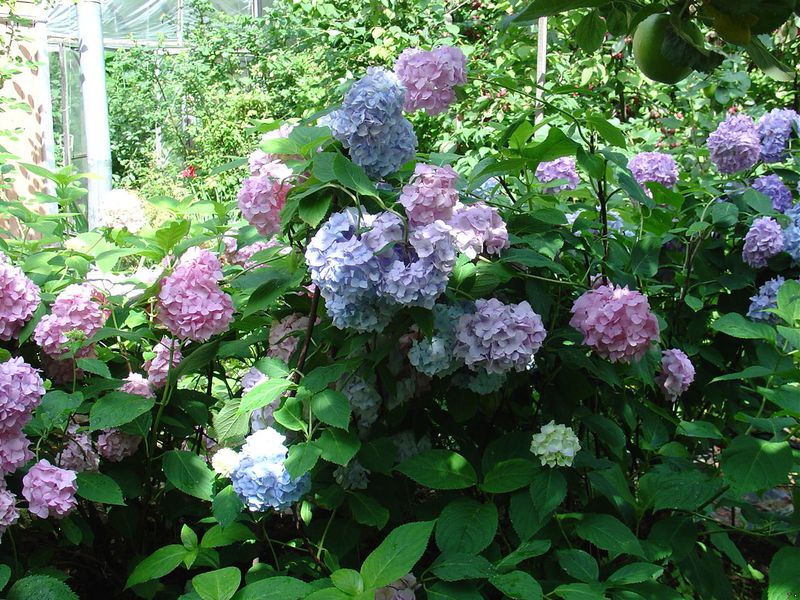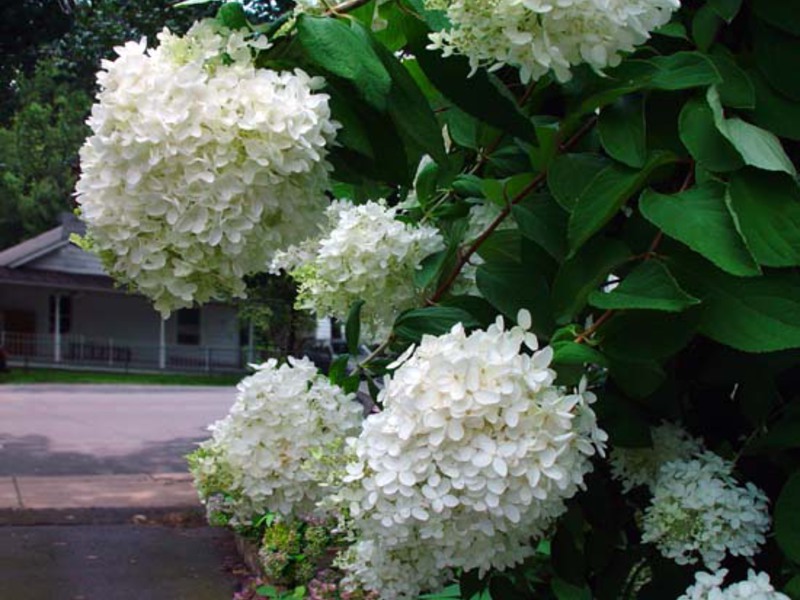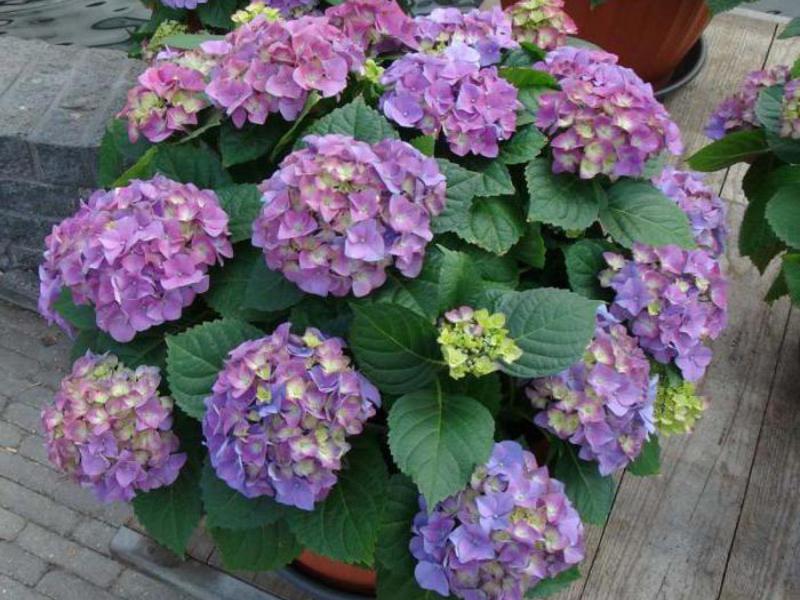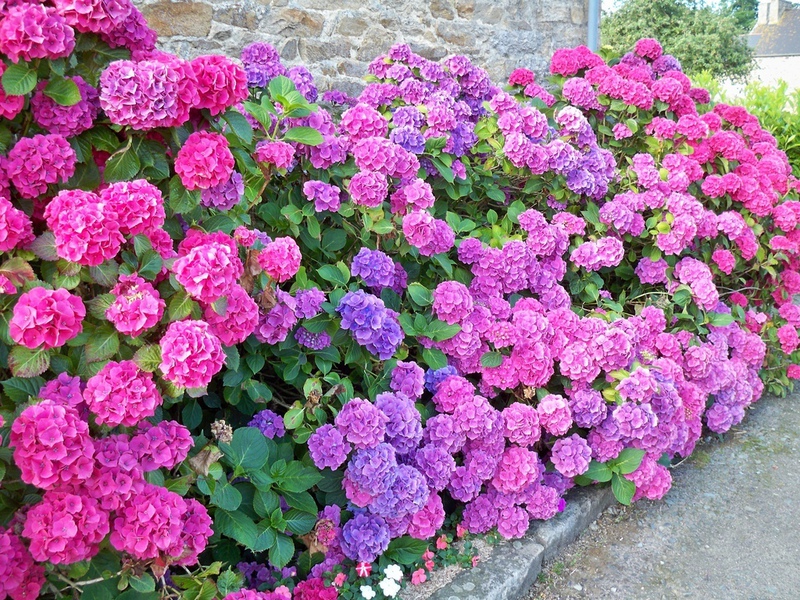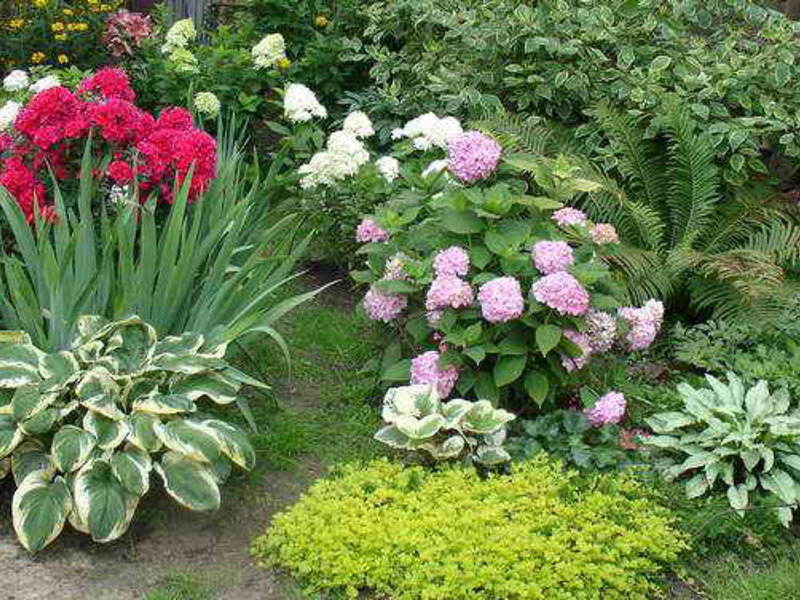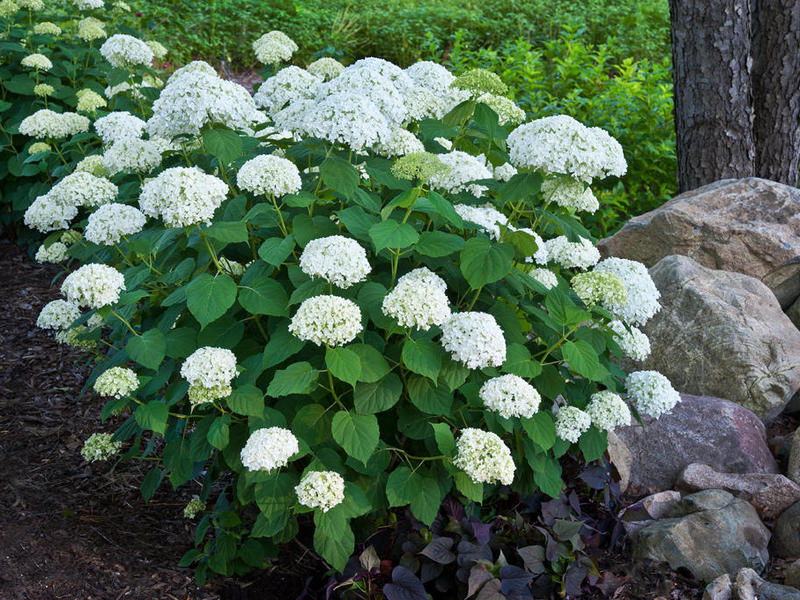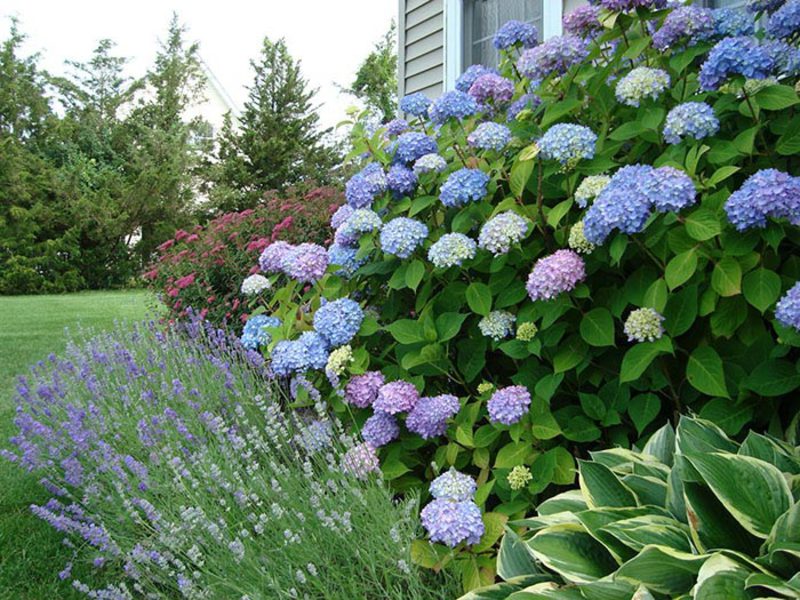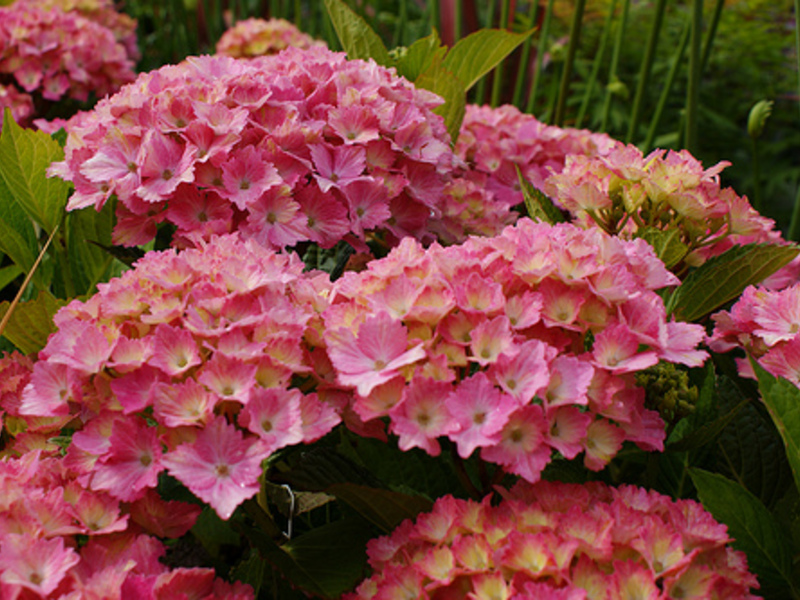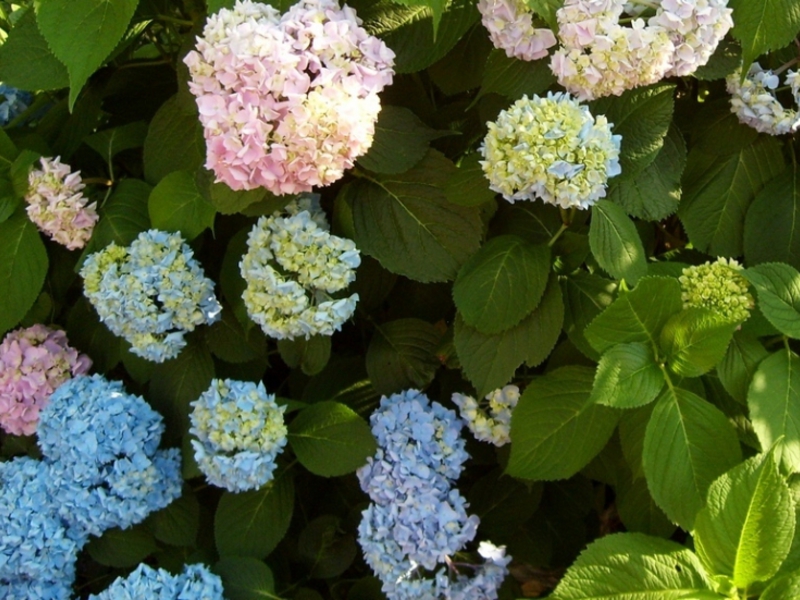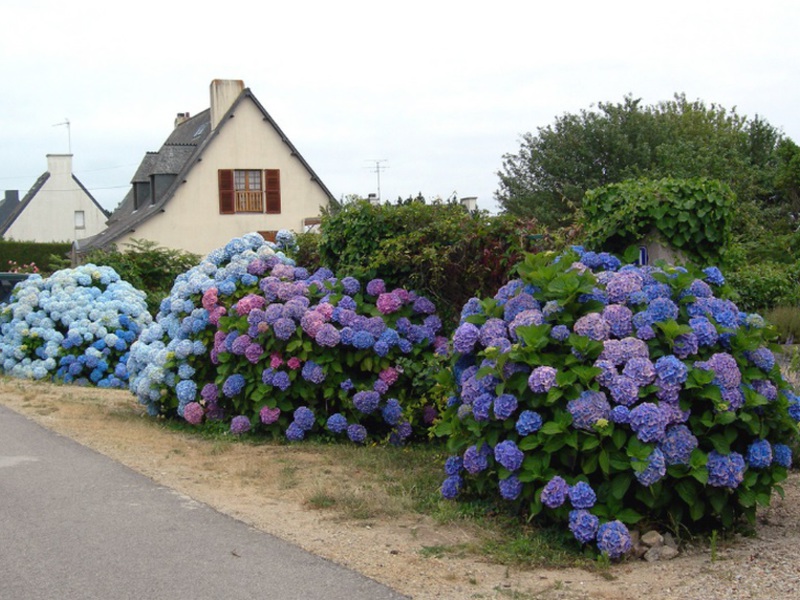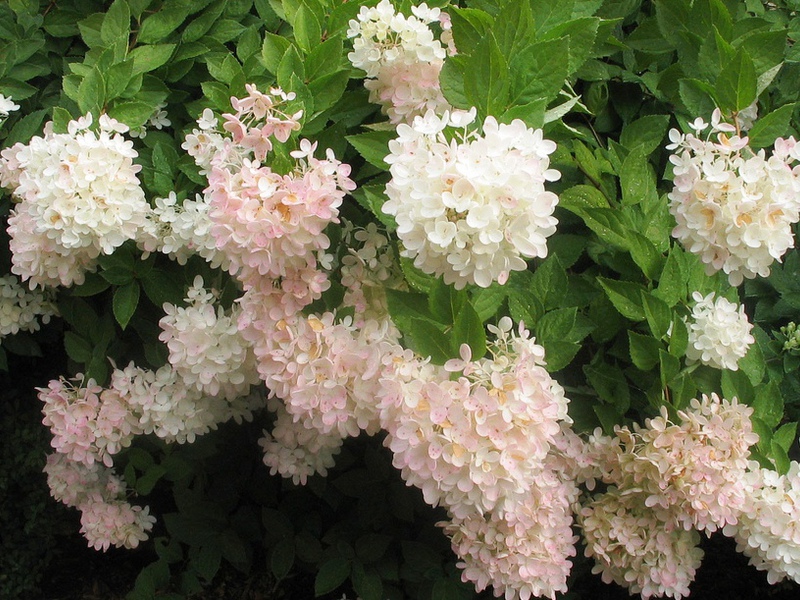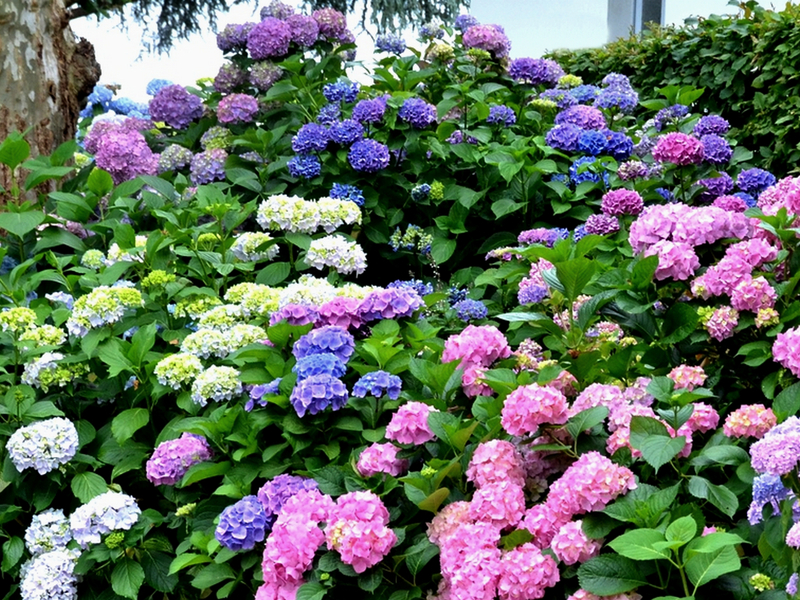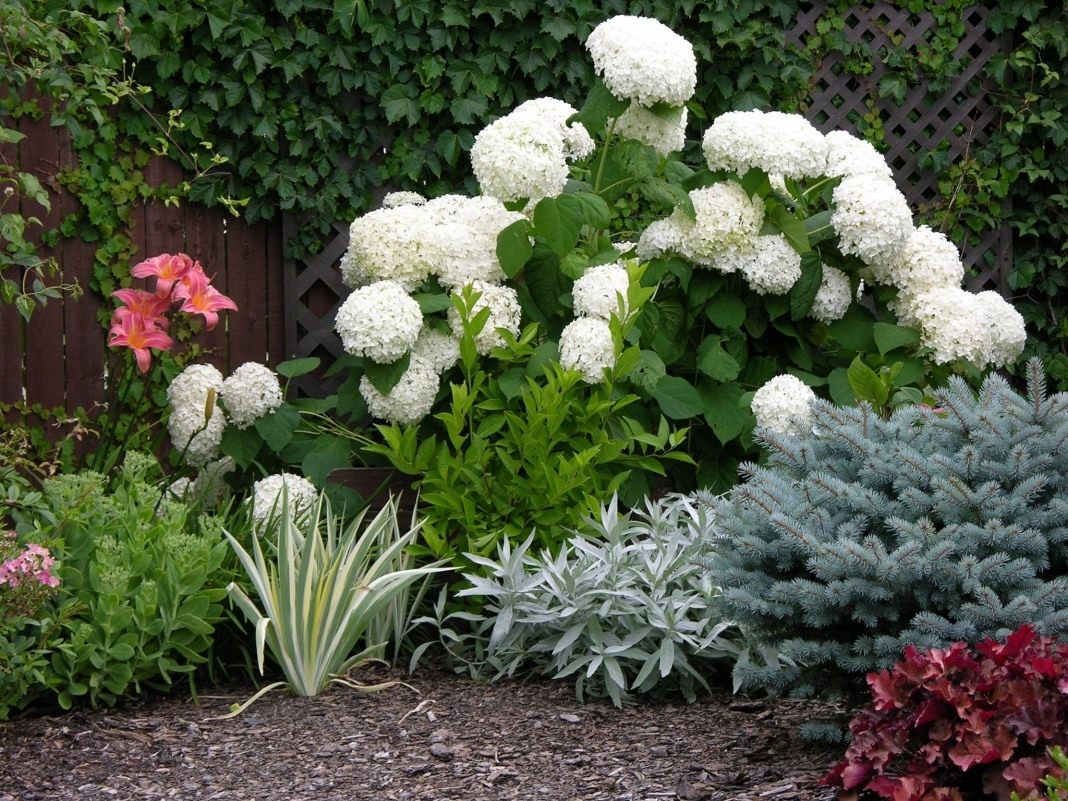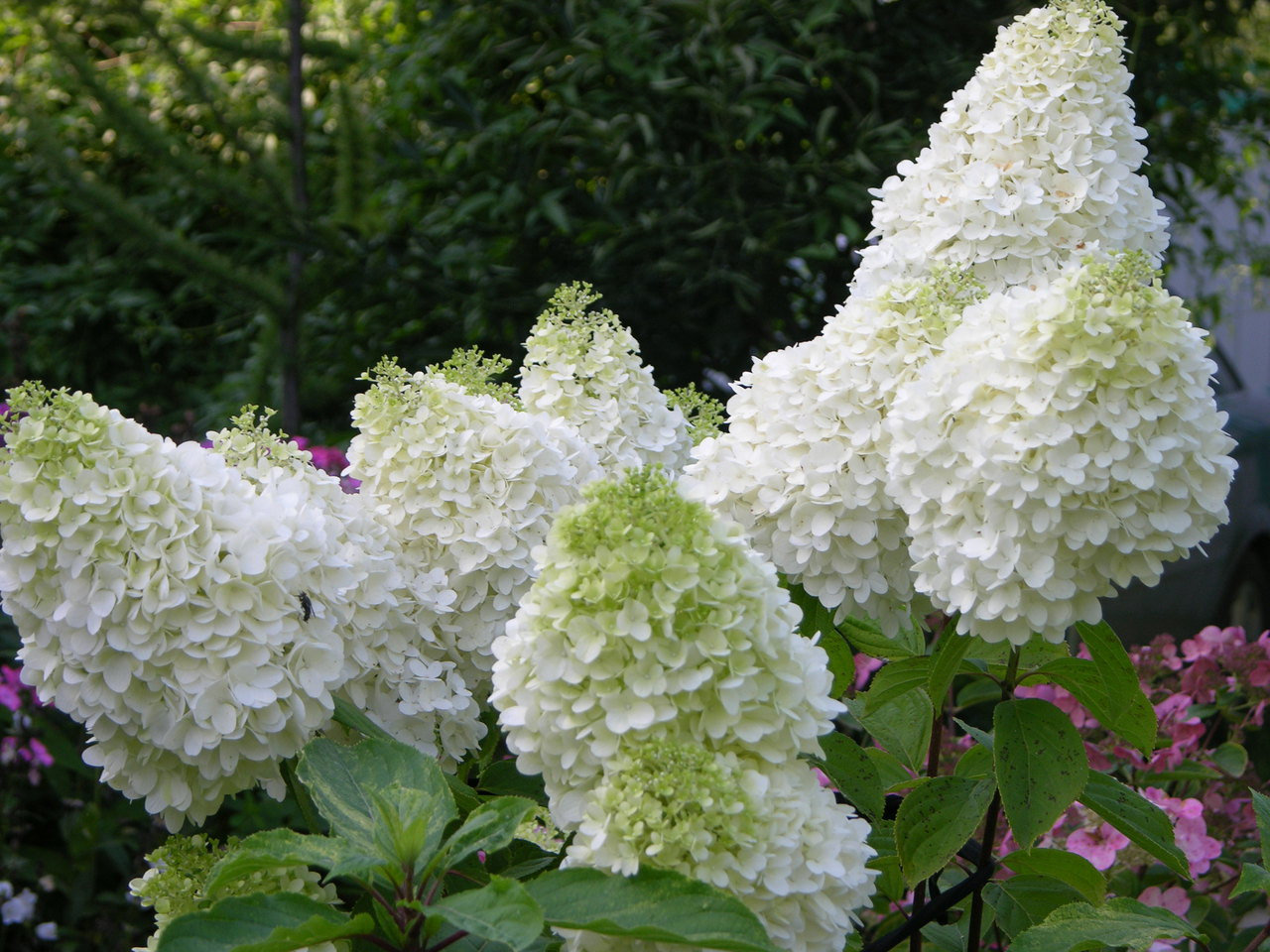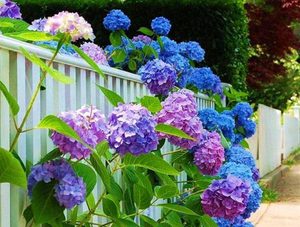 Even on a very large garden plot, it is impossible not to notice a flower bed decorated with large and multi-colored hydrangea caps. This wonderful beautiful plant is so mesmerizing to the eye that you simply cannot pass by it. Hydrangeas have more than 35 species, among which there are varieties that grow well and winter in the Urals and Siberia. But in whatever latitude of our country your garden is, before buying a beauty, you need to study all the features of planting, caring for and growing it.
Even on a very large garden plot, it is impossible not to notice a flower bed decorated with large and multi-colored hydrangea caps. This wonderful beautiful plant is so mesmerizing to the eye that you simply cannot pass by it. Hydrangeas have more than 35 species, among which there are varieties that grow well and winter in the Urals and Siberia. But in whatever latitude of our country your garden is, before buying a beauty, you need to study all the features of planting, caring for and growing it.
Content
Garden hydrangea: photos, types, varieties
Most types of hydrangea are shrubs, but there are lianas and small trees. All of them have beautiful large or small leaves, and flowers collected in paniculate or corymbose inflorescences. All inflorescences are located at the tops of the shoots and have sterile or fertile flowers. Most often, their color can be white, pink or blue.
Among them, only treelike and panicle hydrangea are grown as perennial plants in the gardens of central Russia.
Hydrangea tree - photo
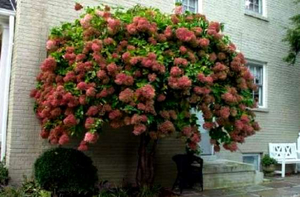 The shrub, which grows up to one and a half meters in height, has large oval leaves, the length of which reaches 20 cm. Slightly pubescent leaf plates are distinguished by a heart-shaped notch at the base and serrated edges. From above they are green, and from below they have a bluish tint. Large sterile and small fertile flowers are collected in corymbose inflorescences, which bloom in the first half of July.
The shrub, which grows up to one and a half meters in height, has large oval leaves, the length of which reaches 20 cm. Slightly pubescent leaf plates are distinguished by a heart-shaped notch at the base and serrated edges. From above they are green, and from below they have a bluish tint. Large sterile and small fertile flowers are collected in corymbose inflorescences, which bloom in the first half of July.
Most suitable for planting in the garden the following varieties of hydrangea tree-like:
- Variety "White House" is a bush with a height of one to one and a half meters. At the ends of its shoots, large thyroid inflorescences are formed, consisting of snow-white sterile and creamy white fertile flowers.
- InvincibellSpirit grows up to 0.9-1.2 m. Its large inflorescences consist of sterile flowers. At first, they have a bright pink color, and over time they fade to light pink.
- Variety "Incrediboll" is a bush that reaches a height of 1.2-1.5 m and has large spherical white inflorescences.
- Heis Starburst is a short bush with slender shoots that can break under the weight of large inflorescences. Inflorescences consisting of double flowers reach 25 cm in diameter.
- The Annabelle variety blooms with white sterile flowers that form large inflorescences with a diameter of up to 25 cm.
Hydrangea paniculata - varieties, photo
Panicle hydrangea differs from tree hydrangea in inflorescences, which consist of large sterile and small fertile flowers, and grow up to 20-25 cm in length... During flowering, they can change color. For the first time, the petals of flowers are white, after a while they acquire a pink tint, and by the end of flowering they turn green. Large leaves of paniculate species are distinguished by an ovoid or elliptical shape. They are strongly pubescent below, and slightly above.
Garden varieties bloom from June to July, and bloom for a long time. Among them are:
 Variety "Vanilla Freise" grows up to two meters and is distinguished by a conical inflorescence, on which are densely packed strawberry pink flowers.
Variety "Vanilla Freise" grows up to two meters and is distinguished by a conical inflorescence, on which are densely packed strawberry pink flowers.- The Phantom variety is a bush with a spreading crown, growing up to 2.5 m. Its pyramidal large inflorescences have a creamy white hue at the beginning of flowering, and turn pink by autumn.
- Variety "Pinky-Winky" is a bush up to 1.8 m high, on the shoots of which openwork conical purple-pink inflorescences are formed.
- The Limelight variety is distinguished by dense greenish inflorescences, which turn pink by the end of the season.
- The variety "Grandiflora" has long been known among gardeners for its dense inflorescences, which consist of sterile flowers.
- The Vims Red variety is a beautifully shaped bush, which reaches a height of 2 m. From the ground to the very top, it is covered with openwork inflorescences that bloom in June. At first, they have a white color, then they become deep pink, and after a while - burgundy-red.
- The variety "White Lady" is distinguished by white inflorescences, which consist of a few flowers with jagged edges. It grows up to two meters.
- The "Kiushu" variety is a bush with delicate inflorescences and erect shoots up to 2.5 m high.
- The "Great Star" variety is a plant up to two meters in height. Its shoots are covered with inflorescences, which consist of white flowers with petals in the form of a "propeller".
- Earley Sensation is distinguished by its early flowering and dark purple shoots. On its openwork, wide-conical inflorescences, purple-pink flowers are formed.
- The "Diamond Rouge" variety is a bush up to 1.8 m high. Its dense, large inflorescences very quickly acquire a red hue.
- The Daruma variety is a low-growing bush with reddish leaves and small openwork inflorescences. The dark pink flowers turn reddish over time.
Features of growing garden hydrangea
Those who decide to grow a hydrangea on their garden plot need follow certain rules her planting, placement and care. It should be remembered that only treelike and panicle hydrangeas grow in Siberia.
Planting and leaving
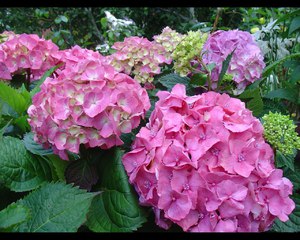 The plant likes well-lit areas with little shade. In sunny areas, hydrangeas grow well and bloom quickly, but from excessive heat they suffer from drying out of the soil and lose their turgor. In full shade, small inflorescences are formed.
The plant likes well-lit areas with little shade. In sunny areas, hydrangeas grow well and bloom quickly, but from excessive heat they suffer from drying out of the soil and lose their turgor. In full shade, small inflorescences are formed.
The soil for planting shrubs must be acidic. Alkaline soil plant will suffer from chlorosis and bloom poorly... Neutral soil for hydrangea is unacceptable.
Hydrangeas planted on nutritious loams will take root well and will grow. Therefore, it is recommended to add clay during planting at the bottom of the pit.
Hydrangea belongs to moisture-loving plants, however, it is not recommended to plant it in areas with high groundwater levels. In addition, the wintering of a shrub directly depends on the moisture intake of the plant roots. The less moisture they accumulate in the fall, the better the plant will overwinter. That is why in autumn the soil around the bushes must be partially covered from precipitation.
Planting garden hydrangeas is done in the spring in pits, approximate the dimensions of which should be 50x50x70 cm... The plant is planted after the last frost has passed.
Store-bought plants with a closed root system can be planted until the end of summer, preparing deeper and wider pits for them. After planting, the bushes are well watered, and the soil around them is 6 cm covered with sawdust or peat mulch.
The distance between plants should be between one and one and a half meters. If the group planting was conceived as a "hedge", then the bushes are planted more densely.
Watering and feeding
During the season in the open field, the bushes are watered once a week.In hot months, the frequency of watering increases up to 2 times a week.
Hydrangea care includes mandatory feeding, which produced twice a year:
- In May or June, during the budding period, the plant is fed with nitrogen fertilizers.
- In summer, the bushes need potassium, which is added according to the instructions.
It is better not to bring ash under the hydrangea bushes, since it reduces the acidity of the soil.
Pruning hydrangea
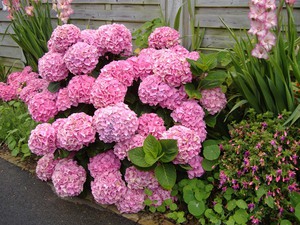 When caring for a hydrangea, you need to be especially careful about pruning a shrub. Pruning is done every spring. Some growers cut the bushes very short, as a result of which they are removed most flower buds... This cannot be done. It is recommended to approach each bush individually.
When caring for a hydrangea, you need to be especially careful about pruning a shrub. Pruning is done every spring. Some growers cut the bushes very short, as a result of which they are removed most flower buds... This cannot be done. It is recommended to approach each bush individually.
First of all, the frozen parts of the shoots are cut out from the plant. If after this there are enough powerful shoots, then last year's branches can be cut to the upper branch. With a small number of annual shoots, only inflorescences are removed from the faded branches.
Too old and thickening shoots are completely cut out. Annual shoots are not recommended to be cut at all. It should be noted that inflorescences for bouquets can be cut during the entire period until autumn.
What to do to make the hydrangea change color?
Experienced growers know that by feeding bushes with pink inflorescences with certain fertilizers, as a result, you can get a plant, blooming with blue or blue flowers... For this, starting in September, once every two weeks, the following is added to the soil:
- aluminum alum solution (2 pcs. for 1 liter of water);
- iron or aluminum sulfate (20-50 g).
If fertilizers are applied irregularly, then both blue and pink inflorescences will begin to form on the shrub.
Preparing hydrangeas for winter
Unfortunately, without shelter in the Urals and Siberia, hydrangea will not be able to overwinter. Therefore, caring for it in regions with cold winters includes preparing the bushes for wintering.
Before sheltering the plants, it is necessary to feed with phosphorus-potassium fertilizers and remove all leaves from them, leaving only the upper ones. This will help speed up the process of lignification of the shoots.
The panicle and tree hydrangea grown in the southern regions can simply be huddle high or cover with peat... For regions with unpredictable and cold winters, you can choose one of the following methods:
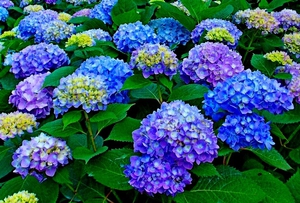 Cover the trunk circle with spruce branches. Bend the shoots away from the center, secure with staples and cover with spruce branches. Cover the center of the bush with peat. Lutrasil is laid on top, which is pressed with bricks or boards.
Cover the trunk circle with spruce branches. Bend the shoots away from the center, secure with staples and cover with spruce branches. Cover the center of the bush with peat. Lutrasil is laid on top, which is pressed with bricks or boards.- Young medium-sized bushes are tied with a rope and carefully, without haste, are attracted and tied to boards lying on the ground, into which nails are driven. From above, the plants are thrown with sawdust or spruce branches, and covered with spunbond, lutrasil or an iron sheet.
- It will be difficult to pull powerful bushes to the ground, so a different method of shelter is used for them. The shoots are wrapped in lutrasil, fixed with tape or rope. A metal mesh is installed around the bush. Dry leaves are thrown inside the weapons, and everything is covered with polyethylene or roofing felt from above. The frame should be 10-15 cm higher than the bushes.
When growing hydrangeas, you should know that every year it winter hardiness increases... Therefore, in some regions, over time, you can refuse to shelter bushes for the winter. But young plants must be covered.
Diseases and pests of garden hydrangea
The plant is resistant to diseases and pests, however, may be amazed:
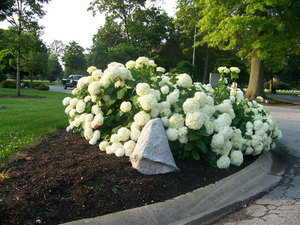 Aphids, which can be driven away by infusion of garlic. To do this, 200 g of chopped garlic is infused in a bucket of water for two days. You can add 40 g of laundry soap to the solution, and spray the plant once every 5-7 days.
Aphids, which can be driven away by infusion of garlic. To do this, 200 g of chopped garlic is infused in a bucket of water for two days. You can add 40 g of laundry soap to the solution, and spray the plant once every 5-7 days.- Powdery mildew infects hydrangeas with excess air humidity.When it appears, the plant is treated with a solution of copper sulfate with soap or special fungicidal agents.
- Sharply clarified hydrangea leaves indicate plant chlorosis. The leaves can lose their natural color due to the excessive content of humus or lime in the soil. Chlorosis is eliminated by alternately watering the plant every three days with copper sulfate and potassium nitrate.
Beautiful hydrangea plant excellent suitable for single and group plantings, goes well with low conifers and looks great against the background of stones. With proper planting and caring for it, you can admire the magnificent flowering and be proud of your flower garden all summer until autumn.
